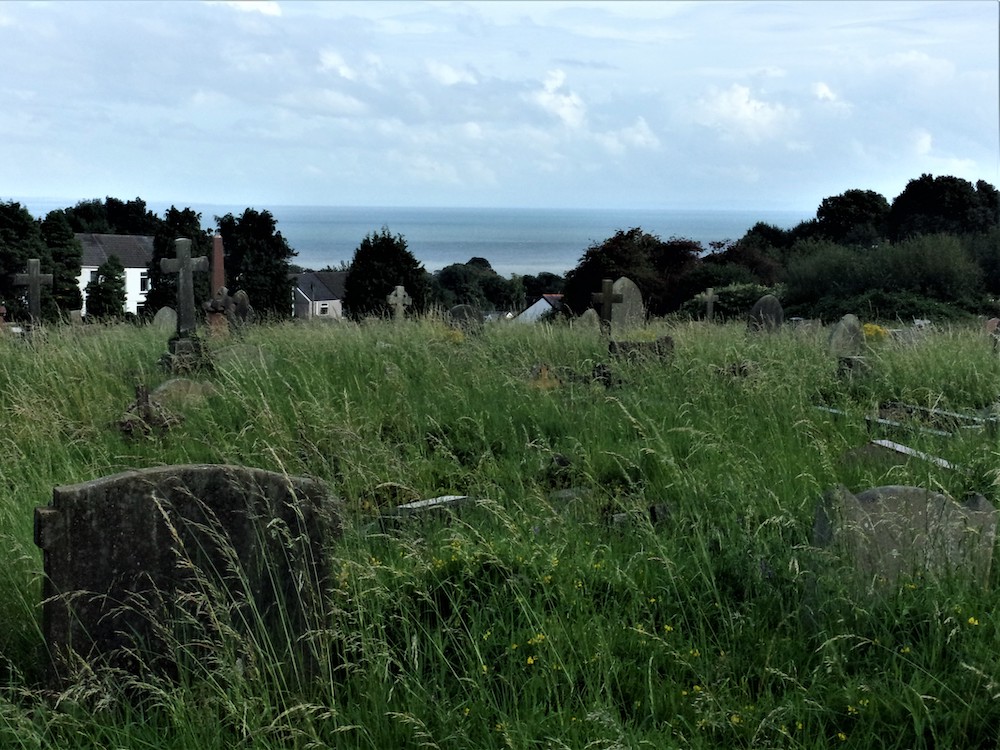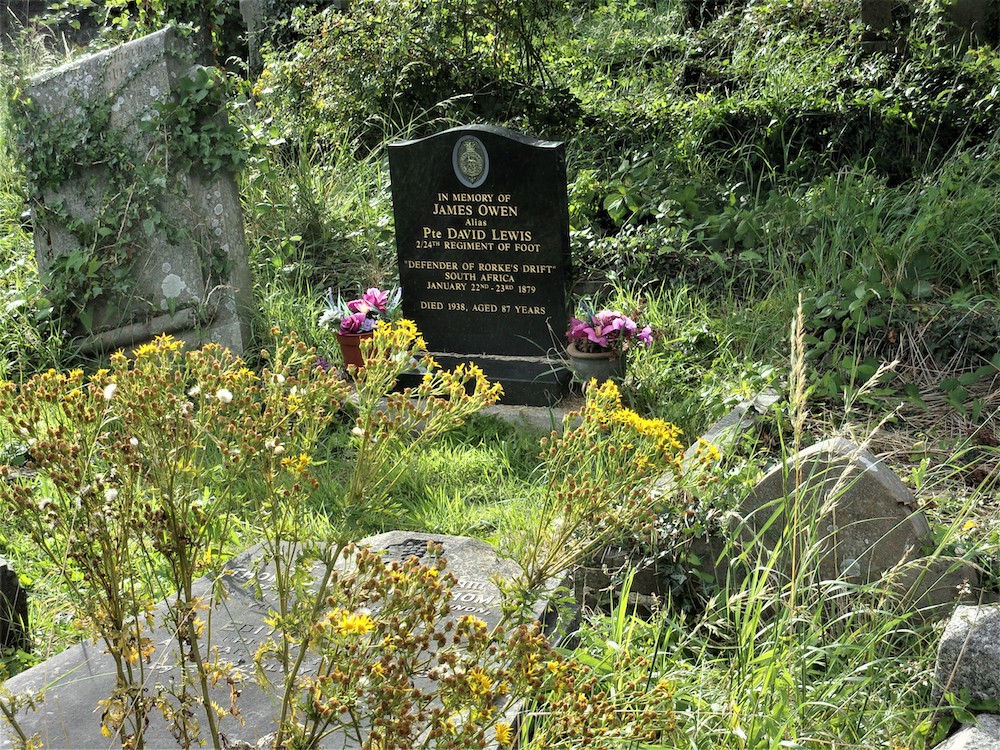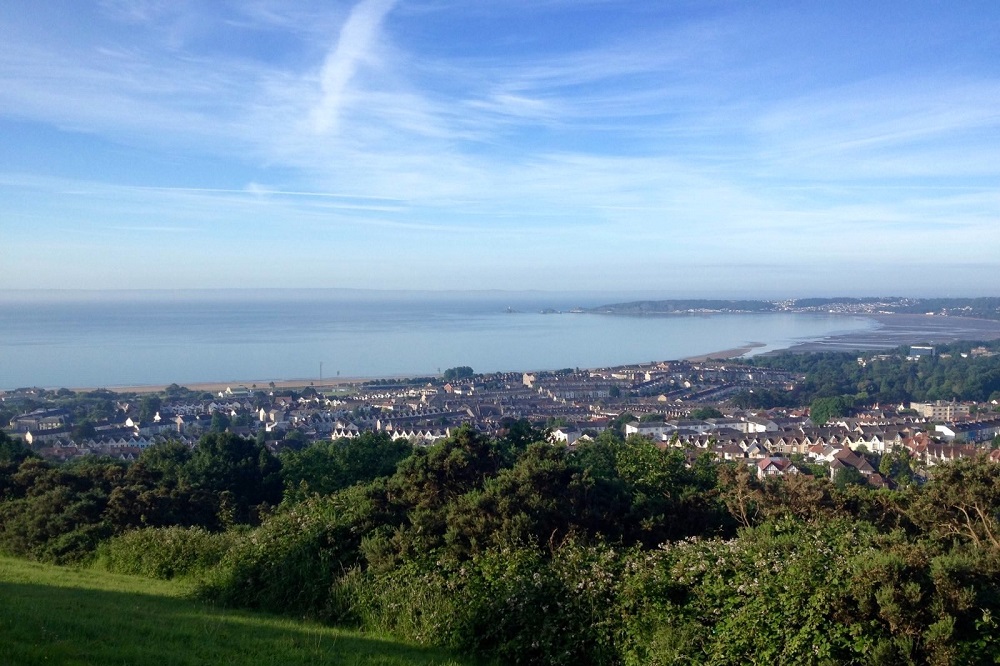Letter from The Uplands

Matthew G. Rees
Dylan (no surname needed) was here, Kingsley Amis too: this part of Swansea that stands a little apart… on its hill that looks over the bay.
I write of The Uplands (grammatical article most definitely attached – or so it has always seemed to my hearing – in the mouths of old-school Jacks).
Never merely ‘Uplands’ as on signs and maps and uttered by those who perhaps wear whiter collars or are more newly moved-in.
Local news: the sale of an old chapel.
Not itself a rare thing in Wales these days, but a story that causes me to journey to the edge of our small universe even so… and to cross over, by some short steps, into the neighbouring land of Sketty.

My interest is not so much the chapel (worthy as it may be) as one of the graves in its quiet and tall-grassed yard. I seek – and find – the headstone of a soldier at sleep: one Private James Owen (alias Private David Lewis).
Would the celebrated poets and painters of Swansea, I wonder, have conjured such a life?
A tin-worker by trade, Owen – fresh-faced, grey-eyed, brown-haired – ‘ran away’ to ‘join up’ (hence his alias).
In 1879 he fought in the Battle of Rorke’s Drift.
Nearly sixty years later, when he died and was buried in the yard at Bethel Chapel, a wreath came from comrades who remembered him.
Look south from his plot, over the yellowed and breeze-bent grass, and you will spy a basin of blue sea.
Narrow your scope (so that it is flanked and foregrounded with certain older properties) and you will have the sense of how it might have been in Owen’s time.
It is a peaceful prospect.
Leaving his headstone, I tell Owen that his isn’t a bad place to be at rest.

Empty
And so back down the Gower and Sketty roads to Uplands (or ‘The’ Uplands, I should say).
While walking I think of that sea view. Pretty? Yes, in its way. The vista of the headland at Mumbles is charming. And I have loved to see the moonlight on the bay late at night… to catch the glint of the lighthouse in the dark.
But, in truth, the prospect is also pretty… empty.
My father – an undergraduate in Kingsley Amis’s day – tells me how it once was: ships busy in the bay.
A harbour pilot or deckhand crossing from Mumbles to Port Talbot without wetting his feet is something I can only imagine.
Swansea had more ‘Horners’ – sailors who’d rounded the treacherous cape – than anywhere in the world.
Today the view is of the sea, and, for the most part, only that, with no more than the odd coaster or fishing vessel to catch the eye before it lands on the lightly etched coast of England.
The marina is full of boats, of course: craft of the pleasure kind.
Those apart, the emptiness of Swansea Bay is as pregnant with meaning as any colliery winding tower that has been brought to a stop or furnace whose fire has gone out.

Copperopolis
The most visibly striking thing about The Uplands, I think, is its housing – and the testament to past riches that it represents.
Think of urban Wales and the mind tends to turn to terraces of sturdy, stone-built cottages.
Not so here. Even our terraces – architecturally – are rather grand: tall, multi-storey Edwardian and Victorian properties, with windows of what would have been servants’ quarters peeping from the top. Many have been converted into bedsits or for shared use by students.
Swansea was once called ‘Copperopolis’ for its prodigious smelting of copper, and the wealth that this created.
Today the word might be ‘College-opolis’, given the magnitude of what seems the new economic mainstay (here and elsewhere in Wales and other parts of the UK).
Strange to think that Swansea University opened in 1920 with just 89 students. These days the figure is around 20,000. The University of Wales Trinity St David also has a strong and growing presence in the city.
Cinderella
Students, of course, spend – and generate – money.
However, the operator of one small business to whom I made this point said the benefit was felt only by certain sectors. He cited ‘hospitality’ (pubs and clubs) and supermarkets.
A significant amount of student spending, he said, was done online.
An issue particular (in terms of potential scale) to university towns is that ‘student-only households’, where full-time students live singly or with others in full-time education, are exempt from council tax… while presumably using, to at least some extent, a town’s public services and facilities (bin collections, for example).
This seems to put councils in something of a bind.
Perhaps this is part of the reason why – aside from new building around the likes of the marina – Swansea seems – especially in relation to Cardiff – something of a Cinderella.
Swansea has ‘paid’, I sense, for Cardiff’s christening as Wales’s capital in 1955.
Has some of the suffering been self-inflicted? Perhaps. The closure of the railway that ran along the seafront to Mumbles seems unbelievably crazy now.
Meanwhile, out-of-town retail parks – fashionable as they may be – seem to have taken their toll on Swansea’s city centre.
In some ways the centre of Swansea feels as if it has never wholly recovered from the horrific ‘visit’ of Hermann Göring, whose awful three-night blitz killed 230 in 1941 (the impact of the Luftwaffe’s ferocious firebombing being the subject of Dylan Thomas’s mournful work Return Journey).
Waiting
Swansea seems a city waiting for something to be done. Maybe reinstatement of the Mumbles line – in a modern, eco-friendly, accessible form – might help… connecting communities and institutions, reducing pollution from road traffic.
Up at The Uplands, commercial life is centred on the shops and businesses of the Crescent and adjoining streets.
Businesses and services I use include the post office, the launderette, a vegetarian café (albeit I’m a – moderate – meat-eater), a baker’s, two pharmacies and a stationer’s / art supplies shop.
Two supermarket chains have branches here. (My preference would be a grocer and a butcher of the traditional, independent kind once found in this neighbourhood.)
A local landmark is The Uplands Tavern (in my father’s time, The Uplands Hotel) where a portrait of Dylan swings on the inn sign.
Bars and outlets for takeaway food are plentiful. Hairdressers, too. And there’s a choice of tanning salons.
Businesses that have closed in recent years include banks, an optician’s and a bookshop.
Would Thomas and Amis have mourned the passing of the latter? Maybe… maybe not (given their reputed fondness for ‘a drop’).
The bookshop became a bar.
Matthew G. Rees’s most recent book is The Snow Leopard of Moscow & Other Stories. His website is here.
Support our Nation today
For the price of a cup of coffee a month you can help us create an independent, not-for-profit, national news service for the people of Wales, by the people of Wales.





Excellent line regarding the ‘myth’ of students bolstering communities. They are addicted to online shopping, such as Amazon and Tesco, and spend virtually zero in local shops or support community businesses. They are also reticent when it comes to supporting theatre, arts, etc., as they favour the type of themed entertainment seen in chain bars and restaurants. Uplands, like other areas, requires a rejuvenation of families and permanent residents.